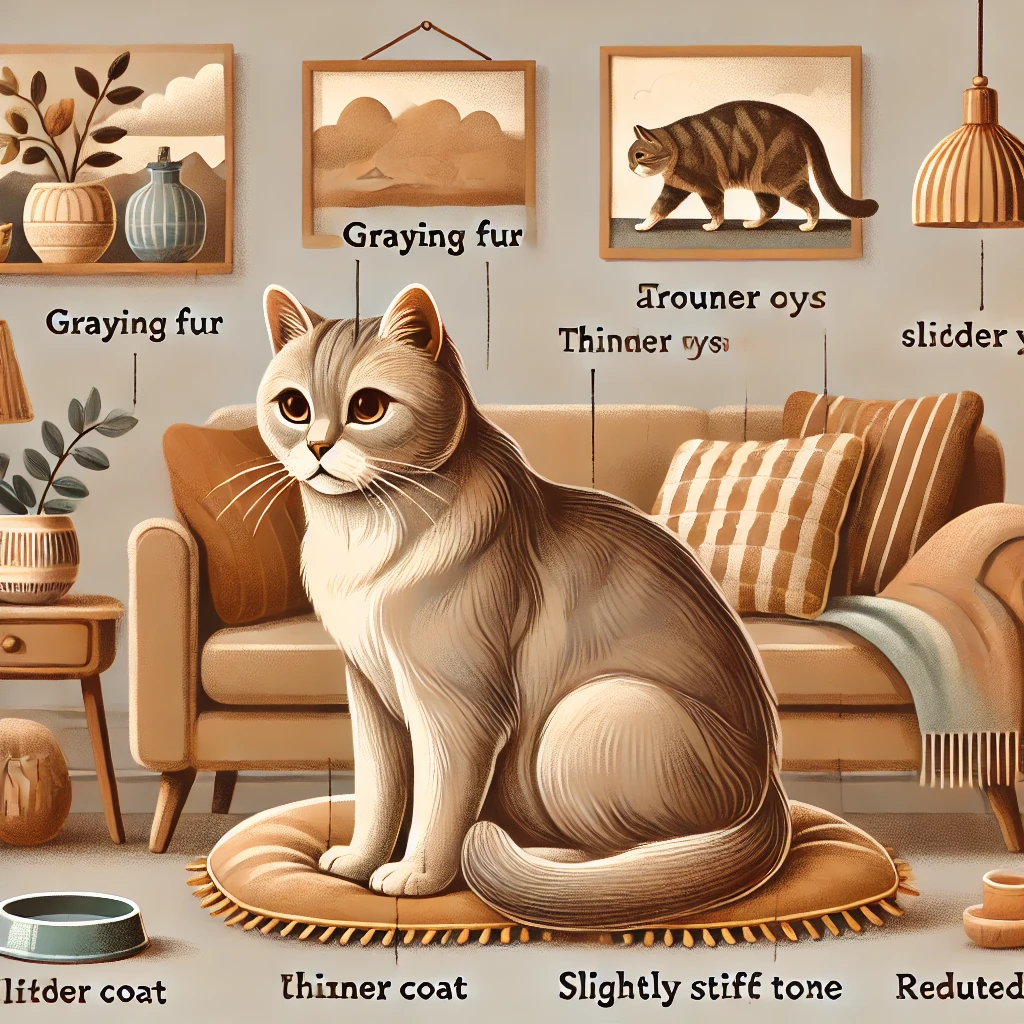Cats have a unique ability to bring joy, comfort, and a sense of wonder to their owners. While most cats live 12–15 years on average, some defy expectations, living well into their twenties or even thirties. What influences a cat’s lifespan? Understanding the factors affecting cat longevity can help cat owners provide the best possible care, ensuring a long, happy life for their feline friends.
Table of Contents
Genetics and Cat Longevity
The genetic makeup of a cat significantly affects its lifespan. Some breeds are predisposed to live longer due to their robust health profiles, while others may face hereditary health challenges.
Role of Breed and Genetics
Mixed-breed cats often have a diverse gene pool, making them less prone to inherited diseases. Conversely, some purebreds, such as Siamese and Burmese, are known for their longer lifespans.
Longevity Differences Between Breeds
While genetics provide a foundation, individual care and lifestyle play crucial roles in maximizing a cat’s potential lifespan. Understanding the unique needs of specific breeds is key.
Diet and Nutrition
A cat’s diet is the cornerstone of its health. Proper nutrition ensures optimal growth, energy, and disease resistance.
Balanced Diet Essentials
Cats are obligate carnivores, requiring a protein-rich diet. Include lean meats, omega-3 fatty acids, and essential vitamins to promote longevity.
Foods That Promote Longevity
- High-quality wet or dry cat food.
- Fish oil supplements for heart and coat health.
- Cooked chicken or turkey as occasional treats.

Foods to Avoid
Avoid giving cats chocolate, onions, garlic, or processed human foods, as these can be toxic.
Veterinary Care and Prevention
Proactive healthcare extends a cat’s life. Regular vet visits catch issues early and prevent severe complications.
Importance of Regular Checkups
Annual or biannual visits help monitor weight, dental health, and organ function. Early detection of conditions like diabetes can save lives.
Vaccinations and Preventive Measures
Timely vaccinations protect against diseases such as feline leukemia and rabies, ensuring long-term health.
Parasite Control
Fleas, ticks, and worms can severely affect a cat’s health. Regular treatments keep these threats at bay.
Indoor vs. Outdoor Living
Where a cat lives impacts its safety, health, and longevity.
Risks Faced by Outdoor Cats
Outdoor cats face dangers like traffic, predators, and infectious diseases. Exposure to harsh weather also takes a toll.
Benefits of Indoor Living
Indoor cats are shielded from most external threats, leading to longer, healthier lives.
Hybrid Lifestyles
A controlled hybrid lifestyle, with supervised outdoor access or enclosed cat patios, offers the best of both worlds.

Stress and Emotional Well-Being
Stress can negatively affect a cat’s immune system and overall health.
Impact of Stress on Health
Chronic stress leads to behavioral problems and illnesses. Cats thrive in environments where they feel secure and loved.
Creating a Stress-Free Environment
Provide safe hiding spots, interactive toys, and consistent routines to keep your cat content and calm.
Exercise and Physical Activity
A sedentary lifestyle can lead to obesity and related health issues in cats.
Benefits of Regular Play
Playtime mimics hunting behaviors, keeping cats mentally and physically stimulated.
Engaging Toys and Exercises
Interactive toys like feather wands or laser pointers encourage movement. Puzzle feeders combine mental engagement with exercise.
Grooming and Hygiene
Proper grooming isn’t just for looks—it supports a cat’s overall health.
Grooming’s Impact on Health
Regular brushing prevents matting, reduces shedding, and minimizes hairballs.
Common Hygiene Practices
Clean litter boxes daily, and ensure your cat’s nails and ears are checked and maintained regularly.
Environmental Factors
Where and how a cat lives contributes to its comfort and longevity.
Temperature and Climate Considerations
Cats prefer moderate temperatures. Avoid exposing them to extreme heat or cold.
Safe Spaces for Cats
Designate a cozy area for your cat with bedding, toys, and scratching posts to promote relaxation.
Chronic Diseases and Aging
As cats age, they may develop chronic illnesses. Managing these conditions can improve quality of life.
Common Age-Related Illnesses
Arthritis, kidney disease, and hyperthyroidism are prevalent in senior cats. Early diagnosis helps manage symptoms effectively.
Managing Chronic Conditions
Work closely with your vet to establish treatment plans, including specialized diets and medications.

Role of Owner Care
Owners play a vital role in their cat’s health.
Building Trust and Companionship
A strong bond encourages cooperation during care routines, making it easier to monitor a cat’s well-being.
Consistency in Care
Stick to feeding schedules and maintain regular grooming to create a predictable, comforting environment.
Conclusion
Understanding the factors affecting cat longevity equips you to make informed decisions about your feline companion’s care. With proper attention to diet, exercise, environment, and healthcare, you can give your cat the best chance at a long, healthy life.
FAQs
- What is the average lifespan of a domestic cat?
Domestic cats typically live 12–15 years, but some exceed 20 years with proper care. - Does neutering/spaying affect a cat’s lifespan?
Yes, sterilized cats tend to live longer due to reduced risk of certain diseases. - Are indoor cats healthier than outdoor cats?
Indoor cats are generally healthier due to fewer risks like injuries and infectious diseases. - Can diet alone extend a cat’s lifespan?
While diet is crucial, factors like exercise and regular vet care also play significant roles. - What are some signs of aging in cats?
Common signs include reduced activity, weight changes, and behavioral shifts. - How can technology help monitor a cat’s health?
Wearable devices track activity, heart rate, and other health metrics, aiding early detection of issues.



